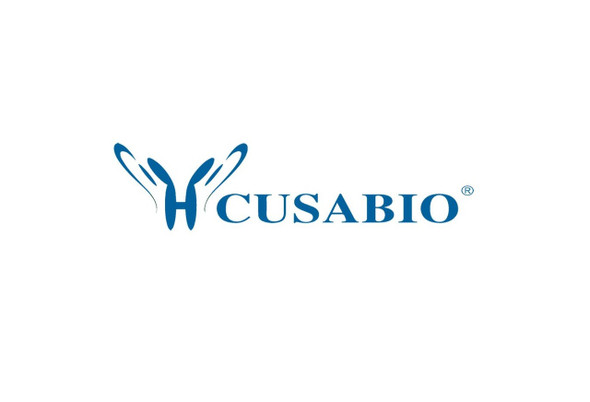Cusabio Rattus norvegicus Recombinants
Recombinant Rat Suppressor of cytokine signaling 3 (Socs3) | CSB-YP022392RA
- SKU:
- CSB-YP022392RA
- Availability:
- 25 - 35 Working Days
Description
Recombinant Rat Suppressor of cytokine signaling 3 (Socs3) | CSB-YP022392RA | Cusabio
Alternative Name(s): Cytokine-inducible SH2 protein 3
Gene Names: Socs3
Research Areas: Others
Organism: Rattus norvegicus (Rat)
AA Sequence: MVTHSKFPAAGMSRPLDTSLRLKTFSSKSEYQLVVNAVRKLQESGFYWSAVTGGEANLLLSAEPAGTFLIRDSSDQRHFFTLSVETQSGTKNLRIQCEGGSFSLQSDPRSTQPVPRFDCVLKLVHHYMPPPGAPSFSLPPTEPSFEVQEQPPAQALPGGTPKRAYYIYSGGEKIPLVLSRPLSSNVATLQHLCRKTVNGHLDSYEKVTQLPGPIREFLDQYDAPL
Source: Yeast
Tag Info: N-terminal 6xHis-tagged
Expression Region: 1-225aa
Sequence Info: Full Length
MW: 26.8 kDa
Purity: Greater than 90% as determined by SDS-PAGE.
Relevance: SOCS family proteins form part of a classical negative feedback syst that regulates cytokine signal transduction. SOCS3 is involved in negative regulation of cytokines that signal through the JAK/STAT pathway. Inhibits cytokine signal transduction by binding to tyrosine kinase receptors including gp130, LIF, erythropoietin, insulin, IL12, GCSF and leptin receptors. Binding to JAK2 inhibits its kinase activity. Suppresses fetal liver erythropoiesis. Regulates onset and maintenance of allergic responses mediated by T-helper type 2 cells. Regulates IL-6 signaling in vivo. Probable substrate-recognition component of a SCF-like ECS (Elongin BC-CUL2/5-SOCS-box protein) E3 ubiquitin-protein ligase complex which mediates the ubiquitination and subsequent proteasomal degradation of target proteins. Ses to recognize IL6ST .
Reference: Endotoxin-induced inhibition of growth hormone receptor signaling in rat liver in vivo.Mao Y., Ling P.R., Fitzgibbons T.P., McCowen K.C., Frick G.P., Bistrian B.R., Smith R.J.Endocrinology 140:5505-5515(1999)
Storage: The shelf life is related to many factors, storage state, buffer ingredients, storage temperature and the stability of the protein itself. Generally, the shelf life of liquid form is 6 months at -20?/-80?. The shelf life of lyophilized form is 12 months at -20?/-80?.
Notes: Repeated freezing and thawing is not recommended. Store working aliquots at 4? for up to one week.
Function: SOCS family proteins form part of a classical negative feedback system that regulates cytokine signal transduction. SOCS3 is involved in negative regulation of cytokines that signal through the JAK/STAT pathway. Inhibits cytokine signal transduction by binding to tyrosine kinase receptors including gp130, LIF, erythropoietin, insulin, IL12, GCSF and leptin receptors. Binding to JAK2 inhibits its kinase activity. Suppresses fetal liver erythropoiesis. Regulates onset and maintenance of allergic responses mediated by T-helper type 2 cells. Regulates IL-6 signaling in vivo. Probable substrate-recognition component of a SCF-like ECS (Elongin BC-CUL2/5-SOCS-box protein) E3 ubiquitin-protein ligase complex which mediates the ubiquitination and subsequent proteasomal degradation of target proteins. Seems to recognize IL6ST (By similarity).
Involvement in disease:
Subcellular Location:
Protein Families:
Tissue Specificity:
Paythway:
Form: Liquid or Lyophilized powder
Buffer: If the delivery form is liquid, the default storage buffer is Tris/PBS-based buffer, 5%-50% glycerol. If the delivery form is lyophilized powder, the buffer before lyophilization is Tris/PBS-based buffer, 6% Trehalose, pH 8.0.
Reconstitution: We recommend that this vial be briefly centrifuged prior to opening to bring the contents to the bottom. Please reconstitute protein in deionized sterile water to a concentration of 0.1-1.0 mg/mL.We recommend to add 5-50% of glycerol (final concentration) and aliquot for long-term storage at -20?/-80?. Our default final concentration of glycerol is 50%. Customers could use it as reference.
Uniprot ID: O88583
HGNC Database Link: N/A
UniGene Database Link: UniGene
KEGG Database Link: KEGG
STRING Database Link: STRING
OMIM Database Link: N/A









